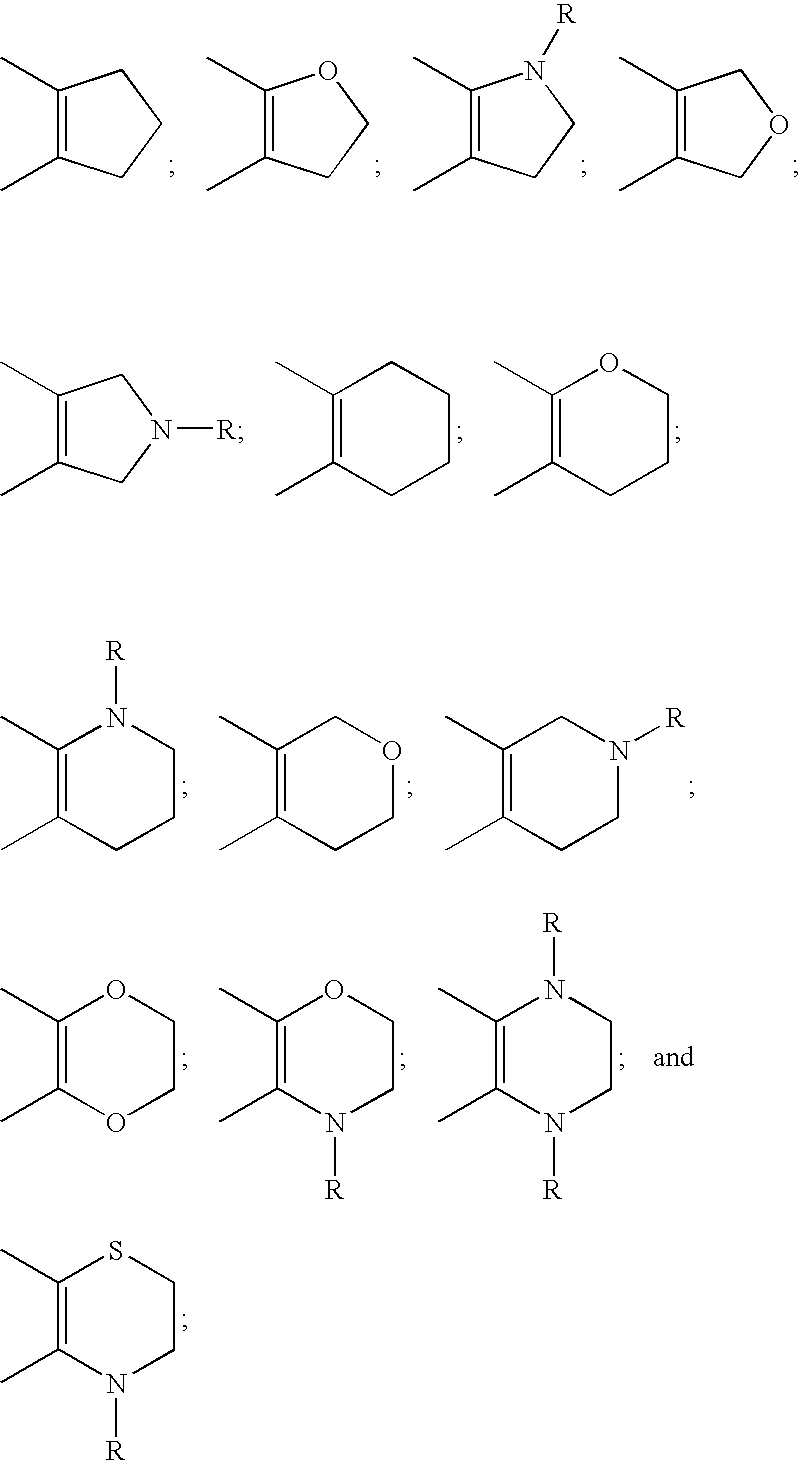Fused tetrahydropyridine derivatives as matrix metalloproteinase inhibitors
a technology of matrix metalloproteinase and tetrahydropyridine, which is applied in the direction of biocide, heterocyclic compound active ingredients, drug compositions, etc., can solve the problems of lack of specificity for any particular enzyme, use of currently known mmp inhibitors, and no selective or non-selective inhibitor of mmp-13 has been approved and marketed for the treatment of any disease in any mammal
- Summary
- Abstract
- Description
- Claims
- Application Information
AI Technical Summary
Benefits of technology
Problems solved by technology
Method used
Image
Examples
formulation example 2
The tablets of Formulation Example 1 are coated in a customary manner with a coating of sucrose, potato starch, talc, tragacanth, and colorant.
formulation example 3
Injection Vials
The pH of a solution of 500 g of an invention compound and 5 g of disodium hydrogen phosphate is adjusted to pH 6.5 in 3 L of double-distilled water using 2 M hydrochloric acid. The solution is sterile filtered, and the filtrate is filled into injection vials, lyophilized under sterile conditions, and aseptically sealed. Each injection vial contains 25 mg of the invention compound.
formulation example 4
Suppositories
A mixture of 25 g of an invention compound, 100 g of soya lecithin, and 1400 g of cocoa butter is fused, poured into molds, and allowed to cool. Each suppository contains 25 mg of the invention compound.
PUM
| Property | Measurement | Unit |
|---|---|---|
| molecular weight | aaaaa | aaaaa |
Abstract
Description
Claims
Application Information
 Login to View More
Login to View More - R&D
- Intellectual Property
- Life Sciences
- Materials
- Tech Scout
- Unparalleled Data Quality
- Higher Quality Content
- 60% Fewer Hallucinations
Browse by: Latest US Patents, China's latest patents, Technical Efficacy Thesaurus, Application Domain, Technology Topic, Popular Technical Reports.
© 2025 PatSnap. All rights reserved.Legal|Privacy policy|Modern Slavery Act Transparency Statement|Sitemap|About US| Contact US: help@patsnap.com



